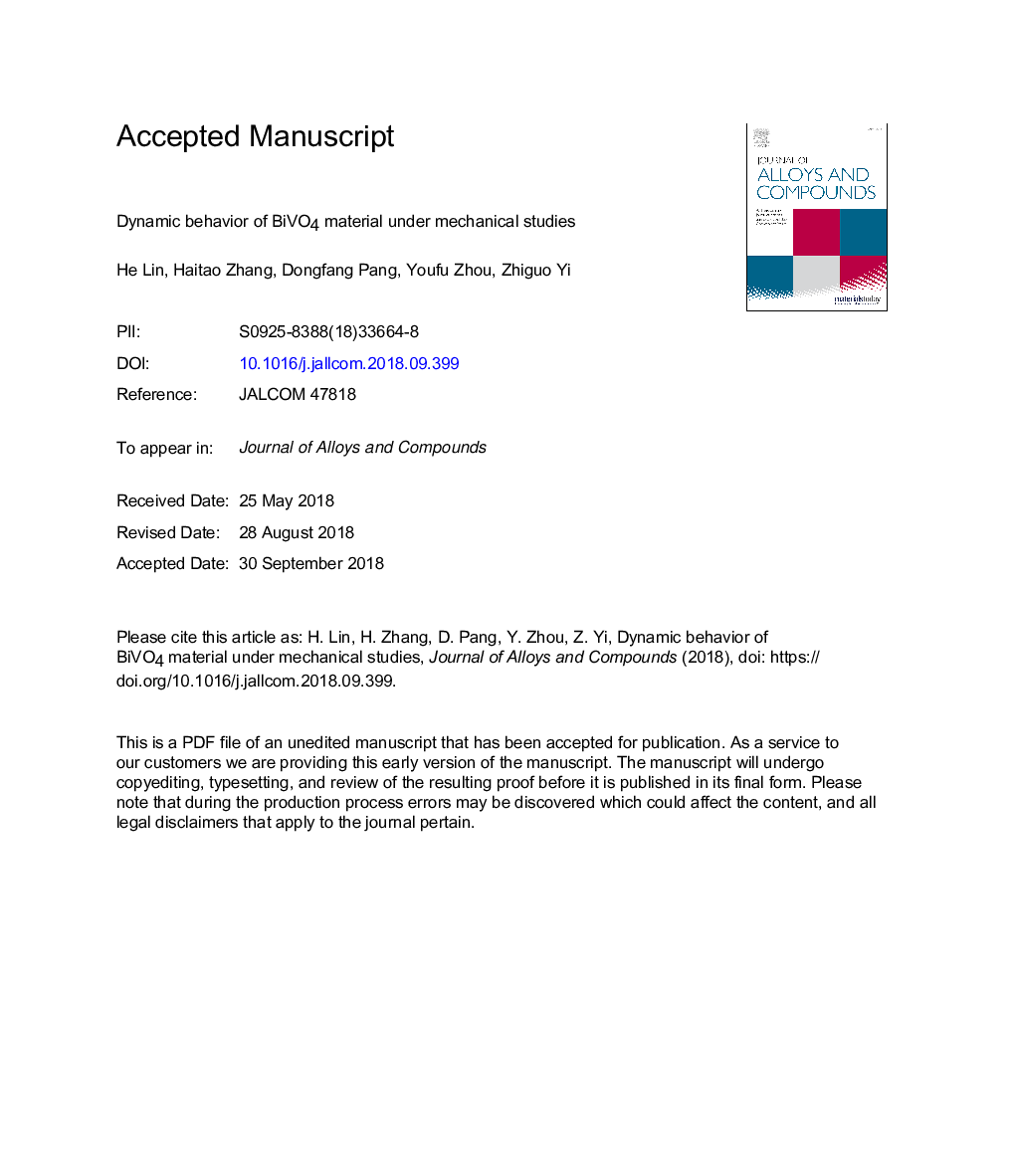| Article ID | Journal | Published Year | Pages | File Type |
|---|---|---|---|---|
| 11015850 | Journal of Alloys and Compounds | 2019 | 20 Pages |
Abstract
The mechanical relaxation technique is applied to investigate the fundamental dynamic behavior of BiVO4 material. A prominent internal friction peak is observed around 430â¯Kâ¯at 1â¯Hz, which is actually composed of three sub-peaks (P1, P2 and P3 from low to high temperature). And the associated modulus anomalies can also be found in any of the samples. The peak P1 with activation energy E1 â¼ 3.20â¯eV is probably related to the stress-induced unequal positions of Bi3+ ions; while the main P2 peak with E2â¯=â¯0.91â¯eV is associated with a complex mechanism, which originates from the viscous motion of domain walls and the interaction of domain walls with oxygen vacancies; and the responsive P3 peak is resulted from the ferroelastic-paraelastic phase transition, accompanied by a minimum modulus value. Based on the relaxation process and crystalline structure of BiVO4, the motion model of ferroelastic domain walls and transport mechanism of diffusion are suggested. Our results pave the way for better understanding the intrinsic dynamic and multifunctional properties of BiVO4.
Related Topics
Physical Sciences and Engineering
Materials Science
Metals and Alloys
Authors
He Lin, Haitao Zhang, Dongfang Pang, Youfu Zhou, Zhiguo Yi,
